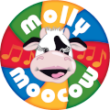Curriculum
Kids and Music
Find out how music & movement can assist children’s language development, motor skills, listening skills and more.
Molly Moocow provides a vibrant theme based curriculum that includes music, movement, singing, drama, stories and role play. We support the stories, songs and activities used within each theme with a vast selection of puppets, percussion instruments, props and play parachutes.
Here you will find all the information about how Molly Moocow’s Montessori-inspired classes are so beneficial for your little ones!
Kids and music are a natural combination. When music is playing, even babies will bop their heads in appreciation. As they get bigger, almost all kids enjoy twirling, dancing, and stomping to music. What looks on the surface like child’s play, is in fact a wonderful developmental tool. Music and movement for babies, toddlers, and pre-schoolers is a way to begin learning about the world around them.
Learning and Having Fun
The best way for young children to learn is through play. You certainly cannot sit a two-year-old down with flash cards and expect a positive response, but if you set the information on those cards to music, the child will happily learn. In addition to becoming skilled at memorising lyrics, music offers children the opportunity to get a feel for the rhythm of language. And by encouraging children to move and sway with the music, we are not only opening them up to artistic interpretation, but are teaching them about body awareness and self-confidence too.
Developing an Appreciation of Music and Movement
Introducing children to music and movement can begin with new-borns being rocked and sung to by their parents. Fussy babies find such activity comforting and parents, too, usually enjoy this one-on-one time with their infant. As the baby matures, parent and child classes that allow for romping and boisterous play along with varying styles and tempos of music are beneficial for children. Not only do they learn and have fun, but the classes are wonderful opportunities for parent/child bonding. Music and movement assist your child’s development immensely.
Healthy Emotional Outlets
Dancing and moving in time with music are wonderful ways for children to express their emotions.
From slow, relaxing music to strong upbeat tunes, children who get to experience many types of musical expression can learn to associate moods with music. It is a great idea to encourage the children to talk about how different pieces of music make them feel. Just as adults find that certain songs can cheer them up when they are feeling down, while others may help them to unwind after a stressful day, children can form a similar connection with music.
Great Exercise
Modern parents often worry that their children do not get enough exercise. Today’s kids are likely to be involved in more scheduled activities than their parents were, but often kids are driven to their various activities. A generation ago kids walked, ran, rode bikes and skipped for exercise and fun. Music tends to get people off their feet. Music and movement classes provide kids with a great outlet for energy while strengthening their bodies through enjoyable exercise.
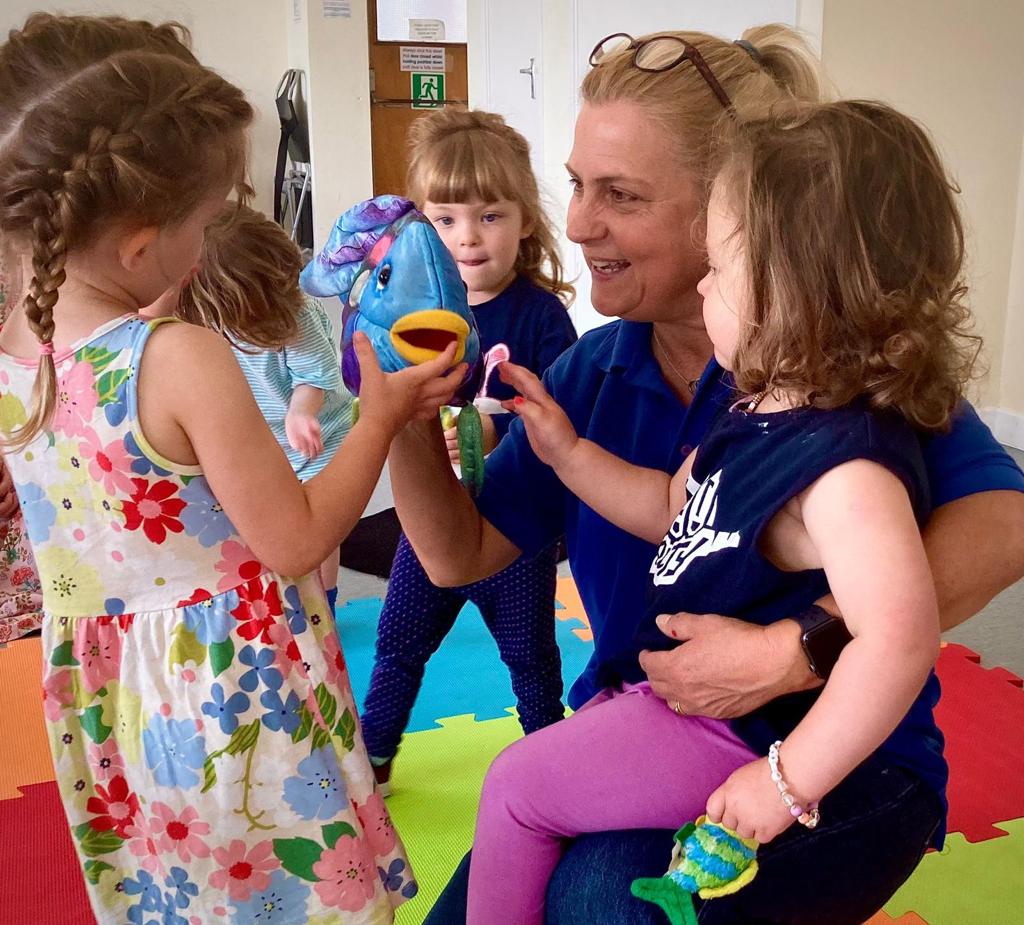
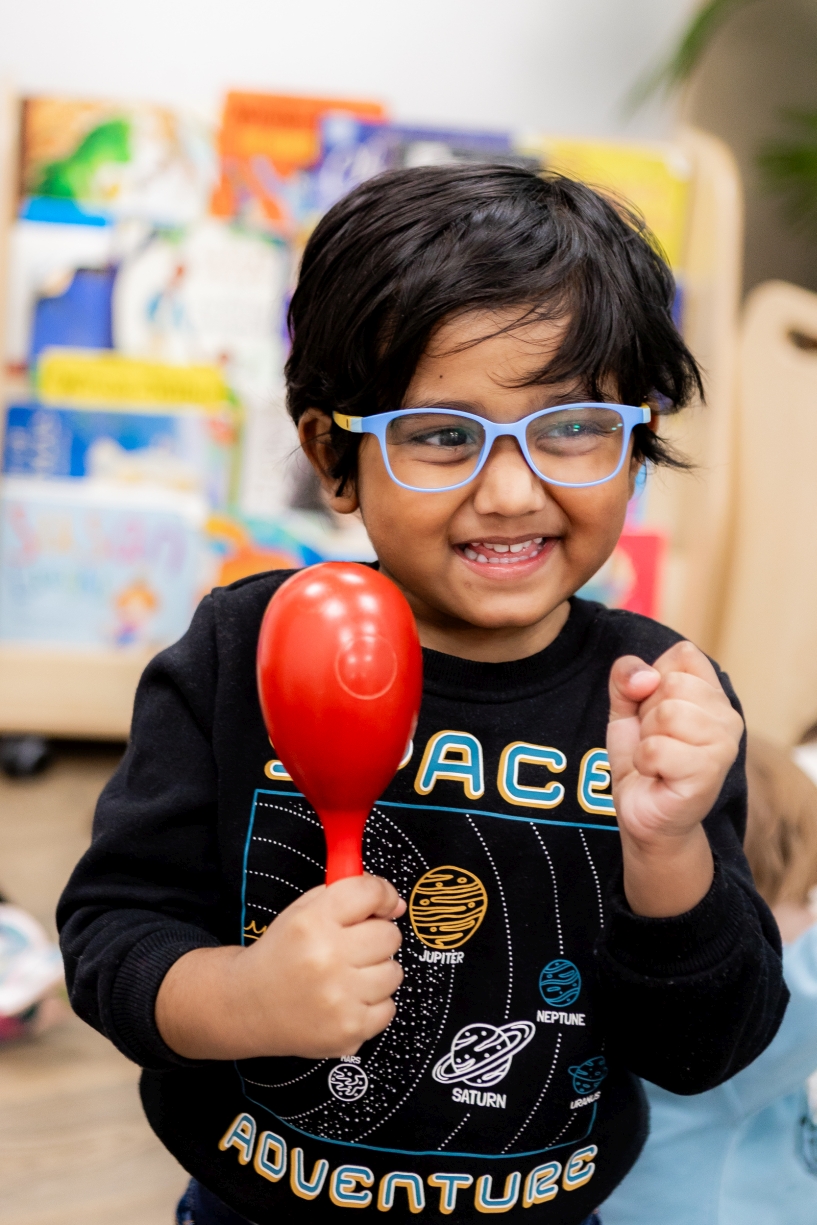
Language Development
Studies have shown that exposing children to music from an early age can help them learn more and remember what they learn. Music and language have many things in common and work well together to enhance children’s development.
The rhythm, pitch and accents of music are the precursors to spoken language, thus music can be used to facilitate speech and communication in young children. Singing songs with your little one enables you to introduce new words, practice sounds, learn rhyming words and model clear speech. Many children learn better when they get to ‘act out’ the song or match actions to sounds and rhythm. Knowledge of songs and nursery rhymes among three year olds was a significant predictor of later pre-reading skills.
Think about all those songs from our teenage years: we still know all the words now – so imagine how knowledgeable we’d be if the content was actually useful!
Here are a few suggestions to nurture your child’s language development:
Activate your child’s listening skills
- The young child is one set of gigantic ears! They hear everything and their growing brain is not organised enough to tune out sounds.
- You can help fine-tune their auditory discrimination by getting them to listen and differentiate between varieties of sounds. For example; birds singing, the wind blowing through the trees, the difference between a bus and a car etc.
Make learning language fun
- Children learn best when they don’t know they are doing it, so incorporate activities into daily routines.
- Sing, sing, sing … it doesn’t matter how tuneful you are (or not) – your little one’s favourite sound is your voice. Music is one of the most transportable forms of play, it can be used anytime and anywhere; all you need is you and your child!
- Play rhyming games, children love to make up rhyming words and find it such an entertaining thing to do – let them experiment with all the sounds. Recognising and making up rhyming words is essential to literacy and language development.
Music is just one of the mediums that can be used for language development. Remember that you are your child’s best role model – create a home environment where your child is encouraged to communicate. Read, play word games and talk together. In a child’s formative years, these activities build the foundation to help them when they start school. In order to develop strong communication skills, children need opportunities to experiment with language and to express themselves both verbally and non-verbally.
Motor Skills
A motor skill is an action that involves the movement of muscles in your body. Gross motor skills are larger movements involving the arm, leg, or feet muscles or the entire body – things like crawling, running, and jumping are gross motor skills. Fine motor skills are those smaller actions like picking things up between the thumb and finger or using the toes to wriggle into sand or the lips and tongue to taste and feel objects.
Gross motor and fine motor skills develop in tandem because many activities depend on the
coordination of both sorts of skills. At 3 months you may notice your baby bringing his hands
together over his chest as he lies on his back (a gross motor skill) and then playing with his hands (a fine motor skill). Even filling a shape sorter box, at about 18 months, for example, requires that your baby be able to use gross motor skills to hold his body steady enough to grasp the shapes firmly and fine motor skills to twist or turn each shape so that it fits into its appropriate hole.
You can encourage your baby to develop his fine and gross motor skills by watching to see how he uses his fingers, his arms, and his legs and then providing other opportunities for him to use his body in similar ways, perhaps with different toys or from a different position, which makes it slightly more difficult. A good activity is one which stretches your baby just a little. Your baby will find that developing his skills is more fun when he has a frequent change of position and activity.
Let little and often be your motto.
The activities within our sessions that develop gross motor skills involve:
- Locomotion – such as walking, running, jumping and hopping.
- Manipulation – such as collecting, rolling, pushing and squeezing.
- Stabilisation – such as balancing, turning, stretching and twis.ng.
They will all assist your child with:
- body awareness
- spatial awareness
- predicting timing
- reacting to directions
- problem solving
- assessing and adapting
- muscle-memory
- coordination
- control
It is through movement that the ability to problem solve first develops. Therefore, let your
children crawl on the floor, climb onto the sofa, squeeze into a tight spot and out again (within limits of course!). Let them climb trees, push the hoover around, ride a bike and roll down a hill.
Motor development builds more than just their muscles. It builds their future!
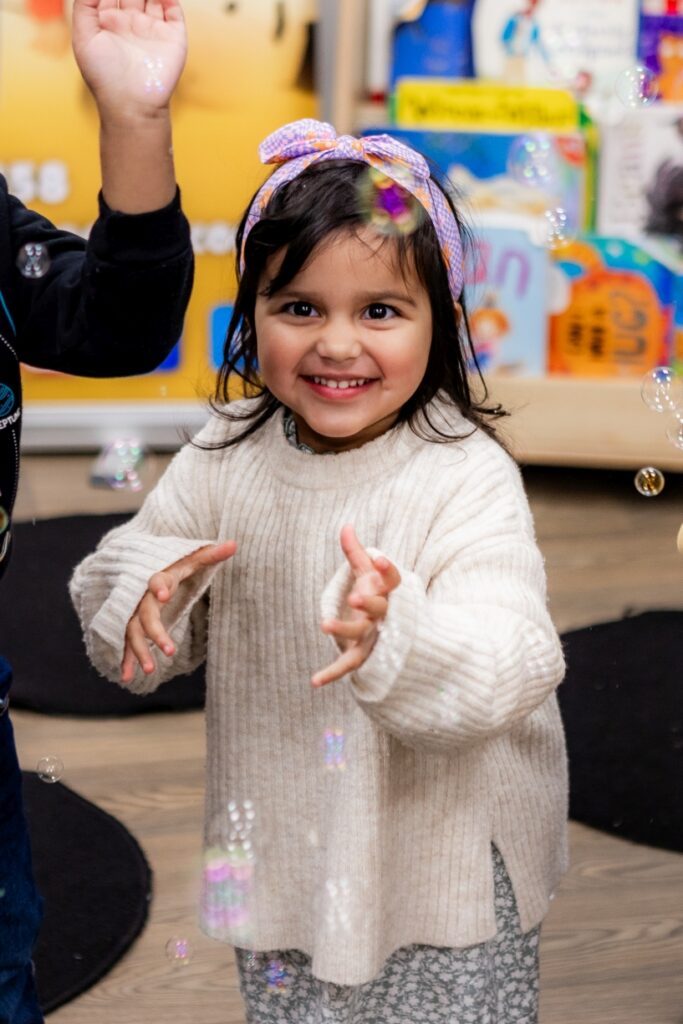
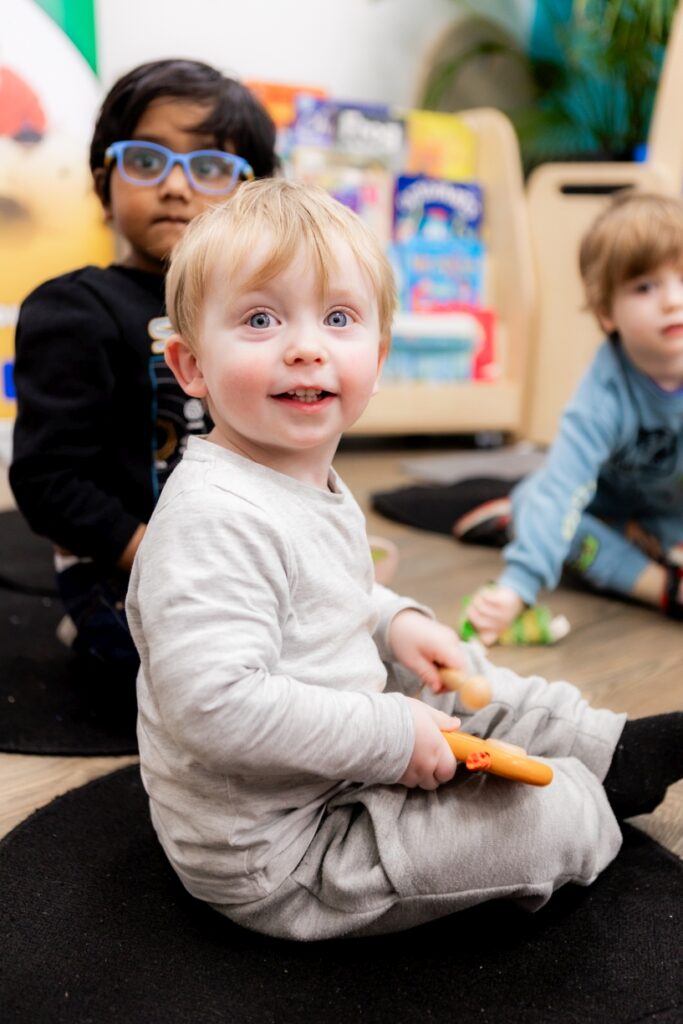
Listening Skills
Music and movement assist your child’s development
Music is a fun and natural educational tool. Singing the words and using the accompanying
movements for action songs have tangible benefits for toddler development. Participating in action songs builds listening skills, which are critical for learning. A lot of the activities that we incorporate into the Molly Moocow curriculum are designed to help our little ones learn to listen and follow directions which set a precedent for future educational situations.
Do you sometimes feel as if you spend more time talking at your child than to them? Many
children have notoriously selective listening skills — they hear what they want and seem to tune out the rest. But listening is a skill that we can help our children improve. Like a muscle, it needs constant exercise to grow stronger.
Here are some games and activities to boost your child’s listening skills.
Talk to your little one all the time
Tell them about an interesting story you read in the newspaper. Describe a conversation you had. When you go shopping, tell them about the shopping trips that you used to take when you were small. Get in the habit of narrating everyday chores. It may not seem as if your child is paying attention – but they are. Don’t be surprised if you hear them repeating something you said.
Make reading an interactive activity
- When reading a book to your little one, stop before turning the page and say: “What do you think will happen next?” Or ask them to predict how a story will end. After you finish the story talk about it together.
- Pick an old favourite – bring out one of your little one’s most dog-eared, battered books and read it aloud, yet again, only this time pause at key points to let them supply the words that come next. Or read the story and purposely change key details to see how well your child is paying attention. If they hear something that’s not quite right, they’ll be sure to correct you.
Make up silly rhymes
The more absurd, the better (“The fat cat ate the hat. Then the rat ate the fat cat who ate the hat…”). This activity will teach your child to listen for words that sound the same and to identify rhyming patterns.
Play listening games
You can rely on old favourites, like Simon Says, or make up your own simple listening games. For example, you can say, “I’m going to give you a mission. I want you to bring me the following items: a hairbrush from the bathroom and a slipper from a bedroom.” Each
round, you can add an extra item.
Use puppets or a voice recorder to relay instructions
Your pre-schooler may choose to ignore you when you ask them to tidy their room, but they may comply happily if the request comes from one of their favourite puppets/toys. Or make any task into a game by recording your instructions!
Play “story chain”
Everyone in the family will enjoy this. Have one person begin a story – “Once upon a time, there was a little boy who lived in a tree house in the woods”, and then have another contribute the next sentence, and so on. Because each person has to listen to what came
before to advance the story, this game enhances listening skills. If your child is too young to extend a plot line, ask him to supply specific details: “What colour was the tree house? Did any friends visit him there? What kind of animals lived near him in the woods?”
“Read” a song together
Buy a music tape and a corresponding book of lyrics, so you can follow the words along with the music. Even children who can’t yet read can pretend to read a songbook.
For more ways on how to incorporate music and movement into daily routine to assist child’s development, talk to our experienced teachers.
